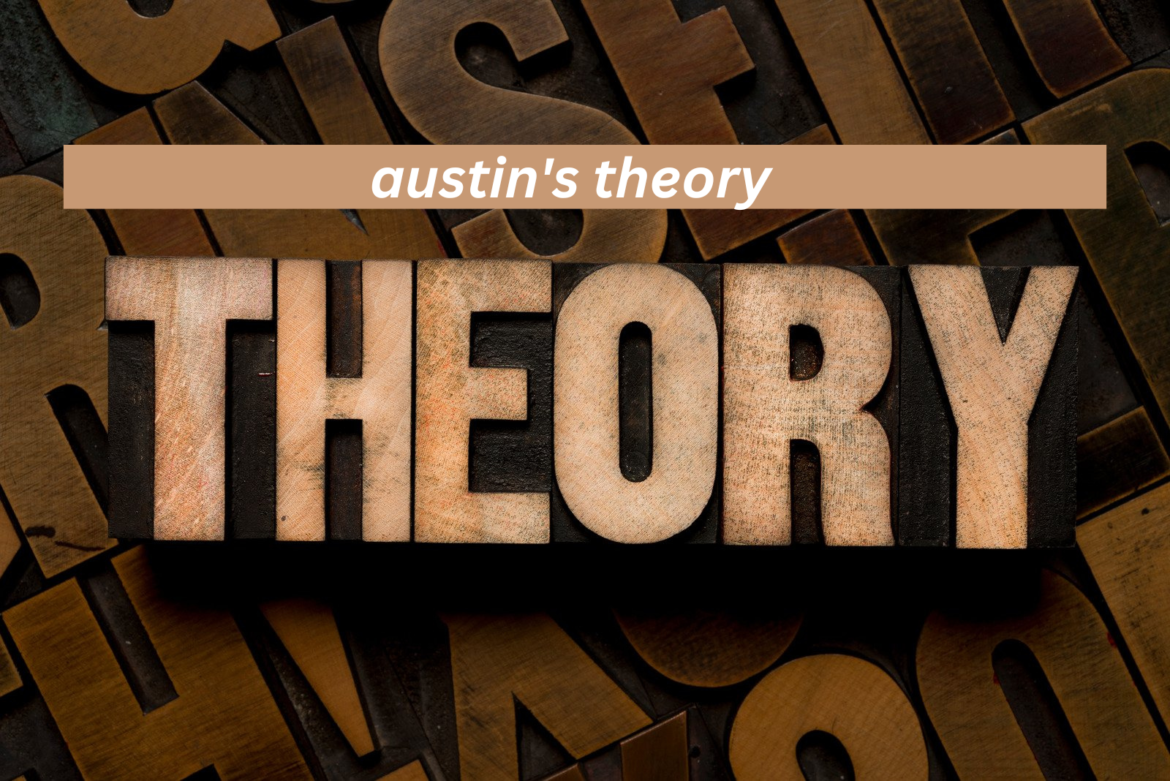Austin’s Theory, often attributed to philosopher J.L. Austin, is a foundational concept in the field of linguistics and philosophy of language. It revolves around the idea that language is not merely a tool for describing the world but also a means of performing actions. Austin introduced the concept of speech acts, which suggests that when people speak, they do not just convey information but also enact behaviors such as promising, commanding, or apologizing. This theory has had a profound impact on various disciplines, including pragmatics, communication studies, and even artificial intelligence.
In this article, we will delve deep into Austin’s Theory, exploring its key components, significance, and applications. We will examine the distinctions between locutionary, illocutionary, and perlocutionary acts, discuss the role of performative utterances, and analyze how this theory influences modern communication. Additionally, we will address frequently asked questions to clarify common misconceptions. By the end of this comprehensive guide, you will have a thorough understanding of Austin’s contributions and why his ideas remain relevant today.
1. Understanding Austin’s Theory: The Basics
Austin’s Theory emerged as a reaction to the traditional view that language primarily serves to make true or false statements. He argued that many utterances are not meant to describe reality but to perform actions. For example, saying “I now pronounce you husband and wife” during a wedding ceremony is not just a statement—it changes the legal and social status of the individuals involved.
At the core of Austin’s Theory is the classification of speech acts into three main categories:
-
Locutionary Act: The actual utterance and its literal meaning.
-
Illocutionary Act: The intended meaning or function behind the utterance (e.g., commanding, questioning, promising).
-
Perlocutionary Act: The effect the utterance has on the listener (e.g., persuading, frightening, inspiring).
This framework helps linguists and philosophers analyze how language operates beyond mere words, influencing social interactions and institutional practices.
2. The Role of Performative Utterances
A key aspect of Austin’s Theory is the concept of performative utterances—statements that accomplish an action simply by being spoken. Unlike descriptive statements, performatives depend on context, authority, and social conventions to be effective.
For instance:
-
“I apologize” (performs the act of apologizing).
-
“I bet you $10” (creates a binding agreement).
-
“I declare this meeting open” (officially starts the meeting).
Austin later refined his theory by distinguishing between explicit performatives (where the action is directly stated, e.g., “I promise to pay you”) and implicit performatives (where the action is implied, e.g., “I’ll pay you tomorrow”).
3. Locutionary, Illocutionary, and Perlocutionary Acts Explained
Locutionary Act: The Literal Meaning
The locutionary act refers to the basic act of producing a meaningful utterance. It involves grammar, vocabulary, and syntax. For example, saying “It’s cold in here” conveys a straightforward observation about temperature.
Illocutionary Act: The Speaker’s Intention
The illocutionary act is the purpose behind the words. The same statement (“It’s cold in here”) could function as:
-
A request (hinting to close the window).
-
A complaint (if the speaker is uncomfortable).
-
A warning (if the cold poses a health risk).
Perlocutionary Act: The Listener’s Response
The perlocutionary act concerns the effect on the listener. If someone responds by closing the window, the speaker’s utterance has successfully influenced behavior.
Understanding these distinctions helps in analyzing real-world conversations, legal discourse, and even marketing language.
4. Criticisms and Developments of Austin’s Theory
While Austin’s Theory was groundbreaking, it faced critiques and further refinements:
-
John Searle’s Expansion: Searle categorized illocutionary acts into five types (assertives, directives, commissives, expressives, and declarations), adding more structure to Austin’s framework.
-
Derrida’s Challenge: Jacques Derrida questioned whether performatives are truly stable, arguing that meaning is always deferred and context-dependent.
-
Applications in AI: Modern chatbots and virtual assistants rely on speech act theory to interpret user intent (e.g., distinguishing between a question and a command).
Despite these debates, Austin’s foundational ideas continue to shape linguistic and philosophical studies.
5. Real-World Applications of Austin’s Theory
Legal Language
Legal documents and courtroom statements often function as performatives. Phrases like “I swear to tell the truth” or “The court finds the defendant guilty” enact legal consequences.
Everyday Communication
From workplace negotiations to social media interactions, recognizing illocutionary forces helps avoid misunderstandings. Sarcasm, for example, relies on the gap between locutionary and illocutionary meaning.
Artificial Intelligence
Voice-activated systems (like Siri or Alexa) use speech act theory to determine whether a user is asking a question, making a request, or giving a command.
Conclusion
Austin’s Theory revolutionized how we understand language by shifting focus from mere description to action. By distinguishing between locutionary, illocutionary, and perlocutionary acts, Austin provided a framework for analyzing the power of words in social, legal, and technological contexts. Despite criticisms and evolving interpretations, his work remains essential in linguistics, philosophy, and beyond.
Whether you’re studying communication, developing AI, or simply interested in how language shapes reality, Austin’s insights offer invaluable perspectives.
Frequently Asked Questions (FAQs)
1. What is the main idea behind Austin’s Theory?
Austin’s Theory argues that language is not just about conveying information but performing actions. His concept of speech acts explains how utterances like promises, commands, or apologies enact real-world changes.
2. What are the three types of speech acts in Austin’s Theory?
-
Locutionary Act: The literal meaning of words.
-
Illocutionary Act: The speaker’s intention (e.g., warning, promising).
-
Perlocutionary Act: The effect on the listener.
3. How does Austin’s Theory apply to everyday life?
It helps us understand how statements function in conversations, legal settings, and even digital interactions (e.g., voice assistants interpreting commands).
4. What is a performative utterance?
A statement that performs an action by being spoken (e.g., “I apologize” enacts an apology rather than describing one).
5. How has Austin’s Theory influenced modern technology?
AI and natural language processing systems use speech act theory to interpret user intent, improving human-computer interactions.

